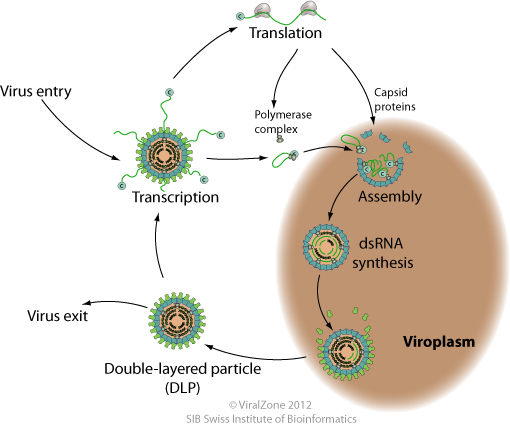Double-stranded RNA virus replication

Related to: all Double-stranded RNA viruses
Location: Host cell cytoplasm, replication/transcription occurs in capsids for most dsRNA viruses.
Replication/transcription events: The 5' part of dsRNA genome may be naked, capped or covalently linked to a viral protein.
Upon infection, the genomic dsRNA is transcribed in mRNAs that will both serve for translation and/or replication. mRNAs translation produces the proteins necessary to ensure replication and encapsidation.
Replication occurs in host cytoplasm and converts ss-mRNA to ds-genomic RNA. But dsRNA is a kind of molecule that cells do not produce, and eukaryotic hosts have various antiviral systems that detect and inactivate dsRNA. To circumvent this defenses, many dsRNA viruses are replicating their RNA inside icosahedral capsids. The RNA polymerases are situated at the fivefold axis of symmetry and produces mRNAs that are extruded from the particle. The genomic dsRNA never enters the cytoplasm, thereby is concealed from cellular dsRNA sensors.
Cell defense against dsRNA: Eukaryotic cells are able to detect and react to dsRNA through the PKR or MDA5 proteins. PKR activation by dsRNA induces inhibition of cellular translation, and induction of various apoptotic and antiviral signals. MDA5 induces interferon signaling, and cellular antiviral state by activating interferon stimulated genes.

